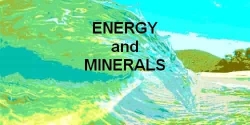Classification of Mineral Deposits
Classification of Mineral Deposits
introduction
hydrothermal deposits
magmatic deposits
syngenetic deposits
epigenetic deposits
porphyry deposits
skarn deposits
vein deposits
mississippi valley type deposits
massive volcanogenic deposits
sedimentary massive sulphide deposits
layered mafic intrusion type deposits
placer deposits
references
Introduction
In order to more readily study mineral deposits and explore for them more effectively, it is helpful to first subdivide them into categories.
This subdivision, or classification, can be based on a number of criteria, such as minerals or metals contained, the shape or size of the deposit, host rocks (the rocks which enclose or contain the deposit) or the genesis of the deposit (the geological processes which combined to form the deposit).
Since there is considerable debate among geologists as to the exact mode of formation (genesis) of most mineral deposits, this is not a good classification criterion.
It is best to stick to features we can all agree on, namely, the physical description of the deposit. We soon see that, even though no two mineral deposits are exactly alike, most of them fall into one or another of a small number of categories.
We also see that each of these categories coincides with a generally accepted hypothesis as to how the mineral deposits formed. In other words, although we started out with a physically descriptive classification, we end up with a classification which also coincides with what we perceive to be unique genetic processes.
It is therefore useful to define a small number of terms used in the classification which have a genetic connotation:
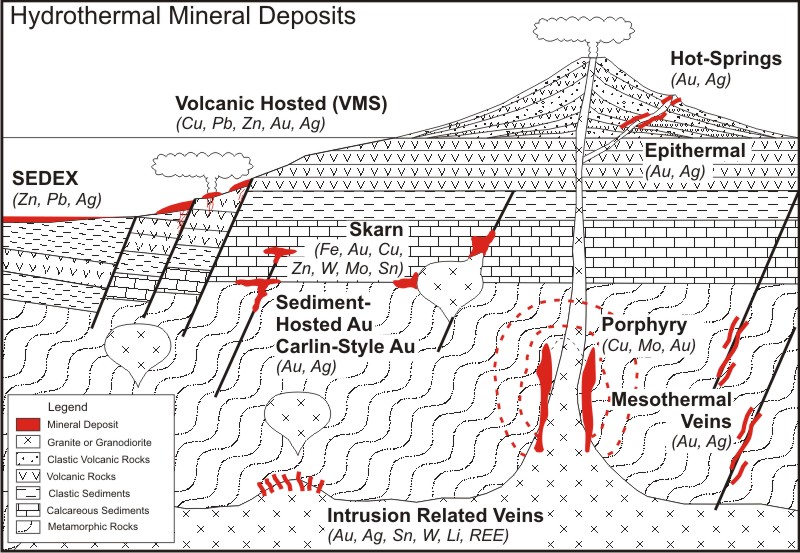
Hydrothermal
Hydrothermal volcanogenic deposits
Hot water or hydrothermal solutions have actually been observed forming mineral deposits, for example, the "black smokers" on the sea floor. The ore constituents, such as Cu, Pb, Au or other metals are dissolved in a hot aqueous solution along with other deposit constituents such as Si, S and Fe.
These elements are deposited to form the ore and gangue minerals in response to a change in the solution, very often a sharp decrease in temperature. an example of this process would be if you dissolved as much table salt as possible in boiling water. If you then cool the solution in the fridge, much of the salt will precipitate or come out of solution.
Magmatic
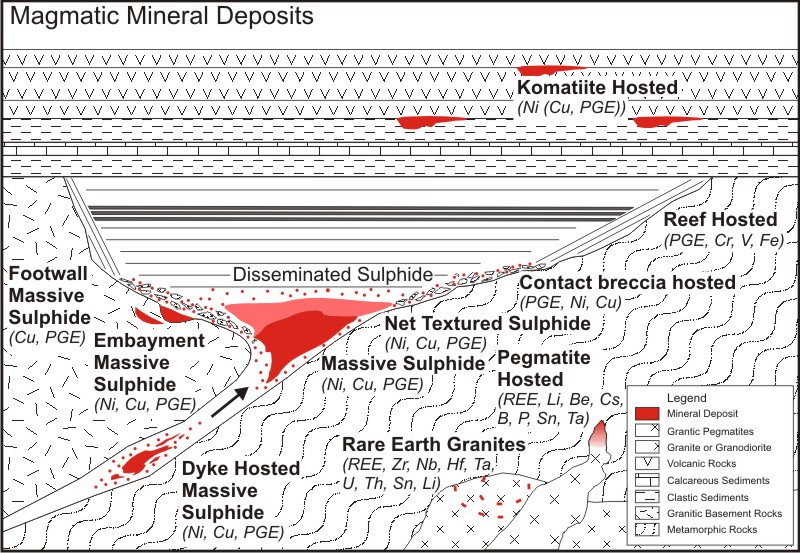
Some mineral deposits, particularly those containing Ni, Cr and Pt, form by the separation of the metal sulphide or oxides in the molten form, within an igneous melt before it crystallizes. These are known as magmatic deposits.
They occur within theigneous rock from which they were derived, such as a gabbro. The ore metals concentrated as liquid in much the same manner as metals are purified in a smelter or blast furnace. The heavier metal-rich liquids sink and concentrate at the base of the intrusive body, while lighter silicate liquid and crystals tend to rise, the same asthe slag in a blast furnace.
Syngenetic
A syngenetic mineral deposit is a deposit which formed at the same time as the rocks that enclose it. Magmatic deposits are syngenetic in that the ore minerals crystallize from the same liquid that produces the silicate minerals which form the bulk of the intrusive - they crystallize more or less simultaneously as the melt cools.Deposits which form on the earth's surface in the form of a sedimentary layer are also syngenetic. The rocks which they lie upon were deposited just prior to the mineralizing event, while the overlying rocks were deposited just after - all three layers being deposited at essentially the same time in terms of the geological time frame.
Epigenetic
If a mineral deposit formed much later than the rocks which enclose it, it is said to be epigenetic.
An example is a vein. The first step in the formation of a vein is the fracturing or breaking of rock along a fault zone, at a depth ranging from surface to several kilometers below surface. The rock must be solid (lithified) and brittle, creating open spaces when it breaks. Hydrothermal solutions pass along the fault zone and deposit or precipitate the ore and gangue minerals within the open spaces. Thus, the vein is necessarily younger than the rocks that contain it.
Since we are fairly certain which deposits are syngenetic and which are epigenetic (although there will always be some degree of uncertainty and overlap), it is convenient to begin the classification with this discrimination. Beyond this, the various categories are based on their physical description, including size and shape. A third level of subdivision is usually based on the metals contained. Here, then, is the classification:
Porphyry
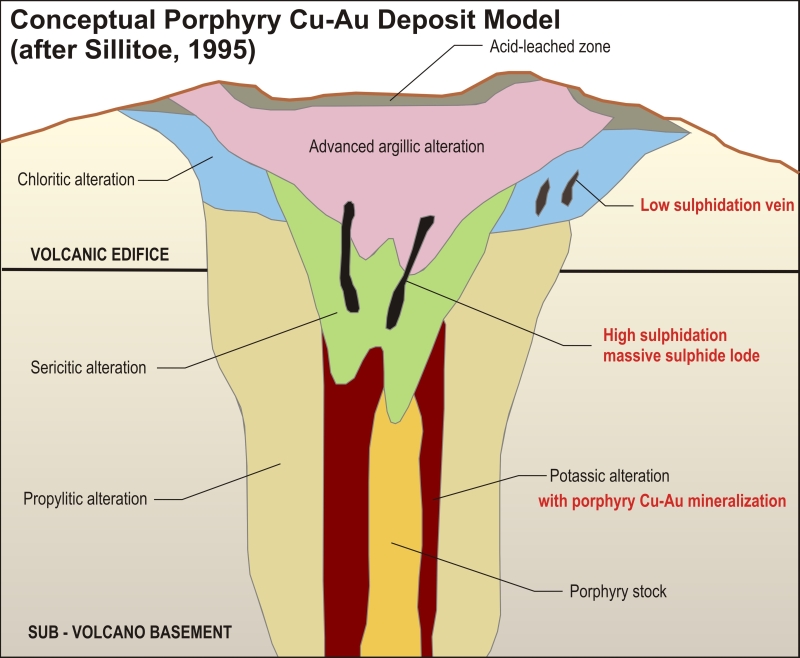
Large, low grade deposits usually associated with a porphyritic intrusive body.
A. Cu-Mo
B. Cu (-Au)
C. Mo (-W)
Skarn
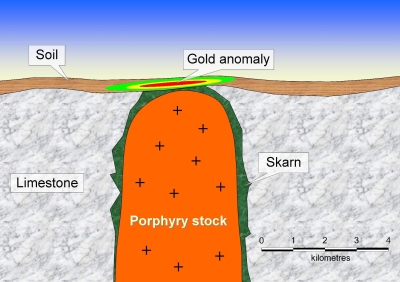
Mineral deposits formed by replacement of limestone by ore and calc-silicateminerals, usually adjacent to a felsic or granitic intrusive body.
A. W-Cu (-Zn, -Mo)
B. Zn-Pb-Ag (-Cu, -W)
C. Cu (-Fe, -Au, -Ag, - Mo)
D. Fe (-Cu, - Au)
E. Sn (-Cu, -W, -Zn)
F. Au (-As, -Cu)
Vein
Fracture filling deposits which often have great lateral and/or depth extent but which are usually very narrow.A. Hypothermal - Cu (-Au)
B. Mesothermal - Cu-Pb-Zn-Ag-Au
C. Epithermal - Au-Ag (-Hg)
Mississippi Valley
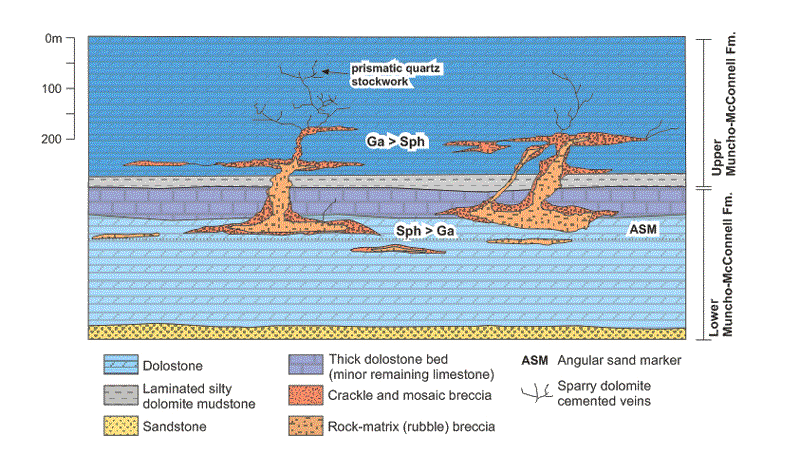
Named for the region where they were first described, these deposits formed within porous carbonate rocks (limestone reefs or caves). They are Pb-Zn deposits with low Ag values.
2. Syngenetic
Volcanic Massive Sulphide (VMS)

These deposits formed as massive (over 60% sulphide) lens-like accumulations on or near the sea floor in association with volcanic activity.
A. Felsic volcanic hosted - Cu-Pb-Zn-Ag-Au
B. Mafic volcanic hosted - Cu (-Zn, -Au)
C. Mixed volcanic/sedimentary - Cu-Zn (-Au)
Sedimentary Massive Sulphide (Sedex)

These are formed by hydrothermal emanations on or near the sea floor in association with the deposition of sedimentary rocks.
A. Pb-Zn-Ag
B. Ba
Magmatic- layered mafic intrusion
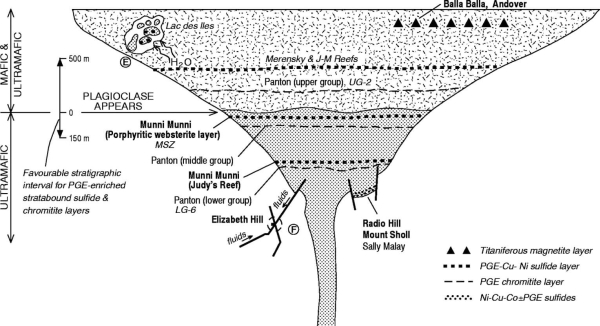
During the crystallization of a magma, usually mafic or ultramafic, heavy, metal-rich liquids settle and accumulate at specific sites, often at the base, within the intrusion.
A. PGM (Platinum group metals)
B. Chromite
C. Ni-Cu (-PGM)
Placer

Formed within sediments by the concentration of heavy resistant minerals (Au diamond, cassiterite) by stream or wave action.
REFERENCES
McKinstry, H.E., 1948,Mining Geology: Englewood Cliffs, NJ, Prentice Hall, 680 p.Peters, William C ., 1978, Exploration and Mining Geology: John Wiley & Sons Inc., 696 p.
Guilbert, John M. and Park Jr., Charles F ., 1986, The Geology of Ore Deposits: W.H. Freeman and Company, 985 p.
Evan, Anthony M., 1993, Third Edition, Ore Geology and Industrial Minerals-An Introduction: Blackwell Scientific Publications Inc., 389 p.
Eckstrand, O.R., 1984, Canadian Mineral Deposit Types: A Geological Synopsis, Geological Survey of Canada, Economic Geology Report 36: Canadian Government Publishing Centre, 86 p.
Roberts, R.G. and Sheahan, P.A., 1988, Ore Deposit Models, Geoscience Canada, Reprint Series 3: Geological Association of Canada, 194 p.

